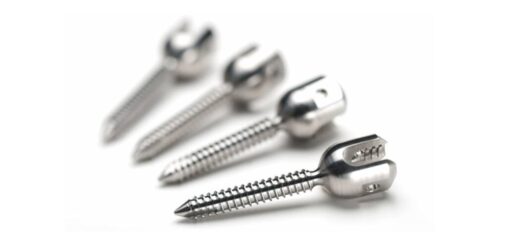Exercises for Pinched Nerve in Shoulder
A pinched nerve in the shoulder, also known as a compressed or impinged nerve, can cause severe pain and limited mobility in the arm and shoulder region. Thankfully, specific exercises can help alleviate nerve compression symptoms and promote healing. In this comprehensive guide, I’ll discuss common causes of pinched shoulder nerves and detail the most effective exercises for pinched nerve in shoulder.
What Causes a Pinched Nerve in the Shoulder?
A pinched nerve occurs when surrounding tissue presses against a nerve in your shoulder, putting pressure on it. This leads to inflammation and irritation that radiates outward, causing sharp shoulder pains.
Several musculoskeletal issues can contribute to nerve impingement:
Poor Posture
A slouched posture rolls the shoulders forward, narrowing the space between your neck and shoulder. This compresses the bundle of nerves known as the brachial plexus that runs through the area. Maintaining an upright, chest-out posture helps take pressure off those sensitive nerves.
Rotator Cuff Injuries
The rotator cuff comprises four muscles stabilizing the shoulder joint. If you tear or inflame one of those tendons, it can press directly into the brachial nerve plexus.
Bone Spurs
Extra bone growth called bone spurs sometimes develops around the shoulder joint. These bony projections can pinch surrounding nerves like herniated spine discs.
Whiplash Injuries
The sudden force of whiplash strains the ligaments and tendons between the neck and shoulder. If inflammation ensues, it can place painful pressure on nerves.
Sports Accidents
Falling directly onto your shoulder or wrenching it during activity leads to bleeding and swelling. The expanding area of damage can easily trap nerves.
Now that you know what’s causing nerve impingement, let’s discuss some tailored shoulder exercises that can help pinched nerves!
Stretching Exercises for Pinched Shoulder Nerves
Gentle stretches relax the tightened muscles, squeezing nerves in your shoulder while increasing blood flow to expedite healing. Make sure not to pull or jerk your arm to avoid further irritating inflamed nerves.
1. Shoulder Rolls
- Stand or sit tall with arms relaxed at your sides.
- Initiate movement from the shoulders as you roll them up, back, down, then forward smoothly.
- Repeat 30-60 seconds in each direction.
Make sure to keep your movements slow, tight, and controlled. Rushing through shoulder rolls or allowing momentum to jerk your arms defeats the purpose.
2. Across Body Shoulder Stretch
- Stand upright and raise one arm laterally until it’s parallel to the ground.
- Grasp the raised elbow with your opposite hand and gently pull it towards your chest.
- Hold the stretch for 30 seconds and return it to the starting position.
- Repeat on the other side.
Avoid overstretching or bouncing during the move.
3. Behind the Back Stretch
- Raise your affected arm behind your back, bending at the elbow.
- Use your opposite arm to grasp the wrist of the raised arm and lightly pull upwards.
- Hold for 30 seconds, then slowly release it back to neutral.
Make sure not to arch or strain your spine as you reach behind.
Aim to perform these pinched nerve shoulder stretches 2-3 times daily. Consistency is critical for reducing nerve inflammation long-term.
Strengthening Exercises for Pinched Shoulder Nerves
Building strength through targeted shoulder exercises accomplishes two goals. First, it stabilizes the area to prevent future nerve impingement. Second, increased circulation delivers nutrients that calm irritation.
I recommend the following three strengthening exercises for pinched nerve in shoulder moves 2-3 times weekly to bolster recovery:
1. Shoulder Scaption
- Stand upright, holding a light dumbbell (1-3 lbs) in one hand.
- Raise the weight diagonally towards the ceiling, angling about 45 degrees between straight in front and straight to your side.
- Slowly lower back down towards the hip.
- Repeat ten times before switching sides.
Scaption directly works the rotator cuff muscles, often involved with shoulder impingements.
2. Wrist Pronation and Supination
- Sit or stand holding a light dumbbell or household item at eye-level with elbow bent.
- Slowly rotate your wrist down, then upwards, causing the weight to sink and rise.
- Repeat 15 times.
Though not a shoulder-centric move, fully rotating the wrist alleviates tension through your forearm that radiates from a pinched shoulder nerve.
3. Shoulder External Rotation
- Hold a resistance band in one hand with your elbow fixed at your side and bent 90 degrees. The band should face forward.
- Pull the band outward while rotating your shoulder and wrist, keeping your arms close to your body.
- Return to start and repeat 15 times before alternating sides.
This isometric hold strengthens your posterior shoulder muscles for enhanced joint stability.
Stick to light weights during these strengthening techniques to avoid placing excess strain on an aggravated injury. I recommend asking your physical therapist or doctor which moves suit your diagnosis.
Everyday Habits for Healing Pinched Shoulder Pain
Beyond targeted stretching and strengthening, your daily lifestyle habits affect nerve healing. Here are a few healthy tips for instilling nerve-supporting ways:
Maintain Good Posture
Commit to not slouching! Sit and stand with an open chest and retracted shoulder blades. This gives nerves ample space rather than crunching them. Set phone alerts reminding you to straighten up.
Sleep on Your Back
Side or stomach sleeping scrunches shoulder joints together. This narrows nerve passageways. Sleeping flat on the back keeps everything evenly aligned. Place a small pillow under the knees for comfort if needed.
Take Movement Breaks
Sitting hunched over a computer all day strains neck and shoulder muscles. Set a recurring alarm to take a 5-minute break for shoulder rolls, walking, or light stretching to decompress.
Manage Stress
Letting stress or anxiety accumulate amplifies nerve irritation and pain signals. Schedule relaxing activities like reading, baths, or meditation that quiet the mind before bed. This prevents tossing and turning that jar’s injured tissues.
Combining nerve-nourishing exercises, stretches, and healthy habits will pave the pathway to pinched nerve recovery success!
FAQs
Can I prevent getting a pinched nerve in the shoulder?
Not always, but strengthening shoulder muscles provides the best defense. Weightlifting, physiotherapy exercises, yoga, and pilates improve joint stability and nerve mobility, making impingements less likely. Proper posture and ergonomics also help avoid slouching that squeezes nerves.
Do I need surgery for a pinched shoulder nerve?
Rarely. Unless dealing with severe injuries like ripped rotator cuffs, surgery usually isn’t required. Most patients improve through a nerve-calming combo of activity modification, rest, physical therapy, medication, and home exercises. Cortisone injections are sometimes used for short-term swelling relief.
How long does it take for a pinched shoulder nerve to heal?
With proper rest and rehab, mild pinched shoulder nerves heal within 6-12 weeks. More severe impingements with muscle tears or bone spurs may linger for six months. Always follow your doctor’s advice and avoid aggravating activities during recovery.
If I have neck pain, could that cause a pinched nerve in the shoulder?
The brachial nerve plexus branching from the neck to the shoulder gets squeezed with disc herniations, muscle knots, or joint swelling higher up. See a physiotherapist to determine if nerve impingement stems from the neck before starting shoulder treatment.
When should I worry about shoulder-pinched nerve symptoms?
See a doctor promptly if you experience muscle wasting in the arm/hand, loss of sensation, and constant numbness or tingling lasting over two weeks despite home treatment. Severe cases heighten paralysis risks. Early intervention prevents permanent nerve damage. Don’t downplay persistent nerve irritation.
Final Verdict
Dealing with a pinched nerve in the shoulder causes aching, stiffness, and significantly reduced arm mobility. While uncomfortable, implementing tailored nerve gliding stretches, gentle shoulder strengthening techniques and healthy lifestyle adjustments provide hope. By consistently applying these exercises for pinched nerves in shoulder, you’ll regain pain-free movement in 6-12 weeks for mild cases.
Remember not to rush your rehab by quickly jumping back into aggravating activities. Nerves need ample TLC to recover. By utilizing a dumbbell to barbell converter in your workout routine, alongside implementing positive posture, sleeping on your back, managing stress, and receiving prompt medical care for worsening symptoms, you’ll enhance your wellness and soon leave that pinching shoulder pain in the past.















